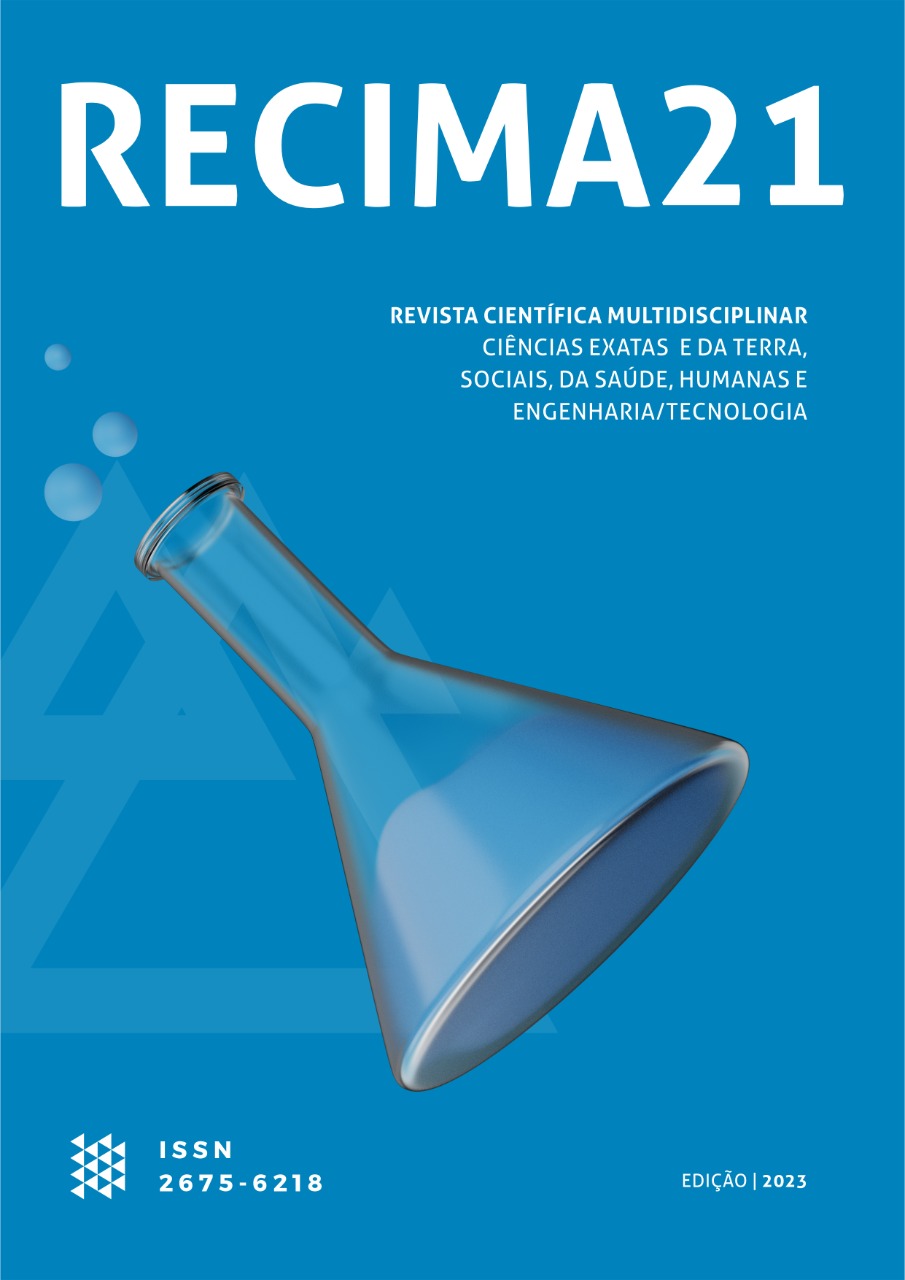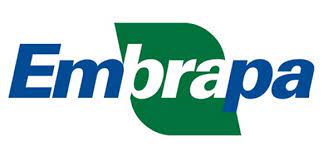CONCENTRAÇÃO DA ATIVIDADE ANTIOXIDANTE E QUALIDADE NUTRICIONAL DE AMORA-PRETA LIOFILIZADA ANTES DO CONGELAMENTO
DOI:
https://doi.org/10.47820/recima21.v4i6.3372Palavras-chave:
Compostos fenólicos., Teor de proteína, Pré secagem, Preservação.Resumo
A amora-preta (Rubus sp.) possui um elevado potencial antioxidante, principalmente pelos teores representativos de compostos fenólicos totais, flavonoides e o alto teor de antocianinas. O objetivo deste trabalho foi avaliar as características físico/químicas e atividade antioxidante da amora-preta in natura, da polpa congelada e pré-liofilizada para congelamento. Para isso os frutos foram higienizados e separados em amostras in natura, congelados por 90 dias com pré-secagem por liofilização, antes do congelamento, por 90 dias. Todas as amostras foram avaliadas quanto à sua composição físico-químicas - umidade, proteína bruta, gorduras brutas, fibra, carboidratos, minerais, sólidos solúveis totais (ºBrix), pH e acidez titulável. As polpas foram preparadas após o tempo de congelamento numa proporção 4:1 (fruta:água destilada), e posteriormente as polpas foram secas, trituradas e foi mensurada a concentração de compostos fenólicos e flavonoides. Foi observada diferença significativa para sólidos solúveis, teor de proteína bruta, carboidratos totais e flavonoides para o tratamento liofilizado comparado ao congelado, sendo que a polpa com amoras liofilizadas não diferiu dos teores da fruta in natura. Portanto, o processo de liofilização das amoras, previamente ao congelamento, mostrou-se mais apropriado, pois conservou melhor os nutrientes, podendo ser utilizado como método alternativo para evitar a perda na composição da amora pós-colheita, já que o fruto é encontrado em meados de novembro e dezembro.
Downloads
Referências
ANTUNES, L. E. C.; BONOW, S.; REISSER JÚNIOR, C. Morango: crescimento constante em área e produção. Anuário Campo & Negócio HF, v. 37, p. 88-92, 2020.
ANTUNES, L. E. C. et al. Produção de amoreira-preta no Brasil. Rev. Bras. Frutic., Jaboticabal - SP, v. 36, n. 1, p. 100-111, 2014.
ARAÚJO, P.F. Atividade antioxidante de néctar de amora-preta (Rubus spp.) e sua influência sobre os lipídios séricos, glicose sanguínea e peroxidação lipídica em hamsters (Mesocricetusauratus) hipercolesterolêmicos. 2009. 123f. Dissertação - Programa de pós-graduação em Ciências e Tecnologia Agroindustrial. Universidade Federal de Pelotas, Pelotas, 2009.
ARAÚJO, P.F.de; RODRIGUES, R.S; MACHADO, A.R.; SANTOS, V. S.; SILVA, J.A. Influência do congelamento sobre as características físico-químicas e o potencial antioxidante de néctar de amora-preta. B. CEPPA, Curitiba-Pr, v. 27, n. 2, p. 199-206, 2009.
CARVALHO, D.G. - A influência dos custos de transação na cadeia produtiva de frutas vermelhas orgânicas da região dos campos de cima da serra (RS). Dissertação (Mestrado). Universidade Federal do Rio Grande do Sul – RS, 2019.
CELANT, Viviane Marcela et al. Phenolic composition and antioxidant capacity of aqueous and ethanolic extracts of blackberries. Revista Brasileira de Fruticultura, v. 38, n. 2, e411, 2016. FapUNIFESP (SciELO). http://dx.doi.org/10.1590/0100- 29452016411.
FERREIRA, D. S.; ROSSO, V. V.; MERCADANTE, A. Z. Compostos bioativos presentes em amora-preta (Rubus spp.) Rev. Bras. Frutic., Jaboticabal - SP, v. 32, n. 3, p. 664-674, Setembro 2010.
GUEDES, M. N. S. et al. Antioxidant activity and total phenol content of blackberries cultivated in a highland tropical climate. Acta Scientiarum. Agronomy, Maringá, v. 39, n. 1, p. 43-48, Jan.-Mar., 2017.
HALVORSEN, Bente L et al. Content of redox-active compounds (ie, antioxidants) in foods consumed in the United States. The American Journal Of Clinical Nutrition, [s.l.], v. 84, n. 1, p.95-135, 1 jun. 2006.
HIDALGO, Gádor-indra; ALMAJANO, María. Red Fruits: Extraction of Antioxidants, Phenolic Content, and Radical Scavenging Determination. Antioxidants, [s.l.], v. 6, n. 1, p.7, 19 jan. 2017. MDPI AG. http://dx.doi.org/10.3390/antiox6010007.
HIRSCH, G.E.; FACCOII, E.M.P.; RODRIGUES, D.P.; VIZZOTTO, M.; EMANUELLI, T. Caracterização físico-química de variedades de amora-preta da região sul do Brasil. Hirsch et al. Ciência Rural, v.42, n.5, 2012.
INSTITUTO ADOLFO LUTZ - IAL. Métodos físico-químicos para análises de alimentos. 4 ed. São Paulo: Ed. digital, 2008. 1002 p.
JACQUES A. C. et al. Bioactive and volatile organic compounds in Southern Brazilian blackberry (Rubus fruticosus) fruit cv. Tupy. Food Sci. Technol, Campinas, 34(3): 636-643, July-Sept. 2014.
LAMEIRO, M.G.S; MACHADO, M.I.R.; MACHADO, A.R.; ZAMBIAZ, R.C. características físico-químicas da amora-preta (Rubus fruticosus) e mirtilo (Vaccinium ashei reade) em seus produtos liofilizados. Gl. Sci Technol, Rio Verde, v.12, n.01, p.173-182, 2019.
MÄÄTÄ-RIIHINEN, K. R.; KAMAL-ELDIN, A. and TÖRRÖNEN, A. R. Identification and Quantification of Phenolic Compounds in Berries of Fragaria and Rubus Species (family Rosaceae). J. Agric. Food Chem., v.52, p.6178-6187, 2004.
MACHADO, H. et al. Flavonóides e seu potencial terapêutico. Bol. Cent. Biol. Reprod., Juiz de Fora, v.27, n.1/2, p.33-39, jan./dez., 2014.
MOTA, R.V. Caracterização do suco de amora-preta elaborado em extrator caseiro. Ciênc. Tecnol. Aliment., n. 2, v. 26, p. 303-308, abr.-jun. 2006).
PAGOT, E.; HOFFMANN, A. Produção de pequenos frutos. In: Seminário Brasileiro sobre pequenas frutas, 1., p. 9-17, 2003.
RE, Roberta et al. Antioxidant activity applying an improved ABTS radical cation decolorization assay. Free Radical Biology And Medicine, [s.l.], v. 26, n. 9-10, p.1231-1237, maio 1999. Elsevier BV. http://dx.doi.org/10.1016/s0891-5849(98)00315-3.
SILVA, R. S.; VENDRUSCOLO, J. L.; TORALLES, R. P. Avaliação da capacidade antioxidante em frutas produzidas na região sul do RS. R. Bras. Agrociência, Pelotas, v.17, n.3-4, p.398-400, jul-set, 2017.
SOUZA J. C.; SILVA R. A.; SILVEIRA E. C., ABREU F. A., TOLEDO M. A. Ocorrência de nova praga nas lavouras de morango no Sul de Minas. Epamig, Circular Técnica (180), p. 1-5, 2013.
VIZZOTTO, Márcia et al. Teor de compostos fenólicos e atividade antioxidante em diferentes genótipos de amoreira-preta (Rubus sp.). Revista Brasileira de Fruticultura, [s.l.], v. 34, n. 3, p.853-858, set. 2012. FapUNIFESP (SciELO). http://dx.doi.org/10.1590/s0100-29452012000300027.
WEN, Yao et al. A polyamide resin based method for adsorption of anthocyanins from blackberries. New Journal Of Chemistry, [s.l.], v. 40, n. 4, p.3773-3780, 2016. DOI: http://dx.doi.org/10.1039/c6nj00054a.
WU, Xianli; PITTMAN, Hoy E.; PRIOR, Ronald L.. Fate of Anthocyanins and Antioxidant Capacity in Contents of the Gastrointestinal Tract of Weanling Pigs Following Black Raspberry Consumption. Journal Of Agricultural And Food Chemistry, S.l., v. 54, n. 2, p.583-589, 22 dez. 2005.
Downloads
Publicado
Como Citar
Edição
Seção
Categorias
Licença
Copyright (c) 2023 RECIMA21 - Revista Científica Multidisciplinar - ISSN 2675-6218

Este trabalho está licenciado sob uma licença Creative Commons Attribution 4.0 International License.
Os direitos autorais dos artigos/resenhas/TCCs publicados pertecem à revista RECIMA21, e seguem o padrão Creative Commons (CC BY 4.0), permitindo a cópia ou reprodução, desde que cite a fonte e respeite os direitos dos autores e contenham menção aos mesmos nos créditos. Toda e qualquer obra publicada na revista, seu conteúdo é de responsabilidade dos autores, cabendo a RECIMA21 apenas ser o veículo de divulgação, seguindo os padrões nacionais e internacionais de publicação.

 Clique para ver detalhes
Clique para ver detalhes 











